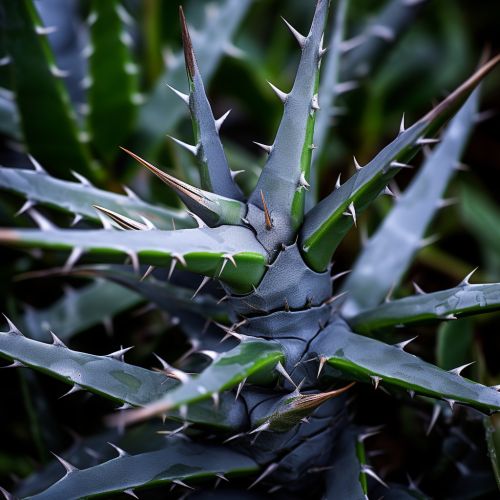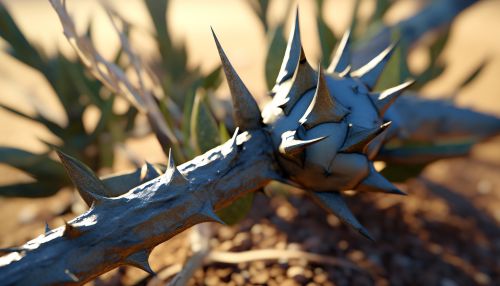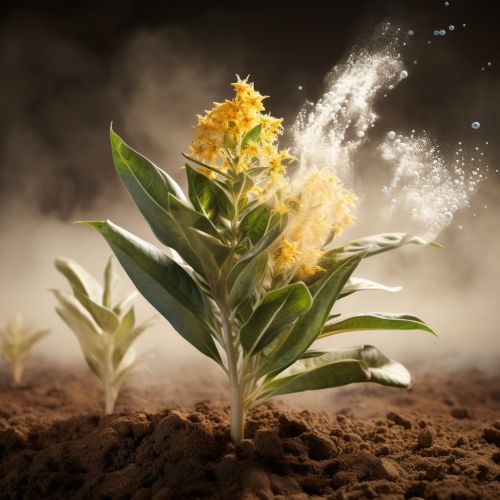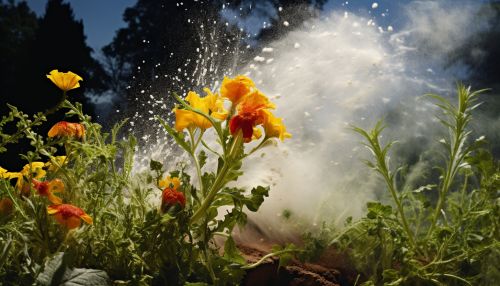Mechanisms of Plant Defense Mechanisms in Natural Ecosystems
Introduction
Plant defense mechanisms are a complex set of biological responses that plants use to protect themselves from pathogens, herbivores, and other environmental stresses. These mechanisms are crucial for plant survival and reproduction in natural ecosystems. This article will delve into the intricate mechanisms that plants employ to defend themselves and maintain their existence in various ecosystems.
Physical Defense Mechanisms
Plants have evolved a variety of physical defense mechanisms to deter herbivores and pathogens. These include the production of physical barriers such as thorns, spines, and prickles, as well as the development of tough, indigestible tissues.


Thorns, Spines, and Prickles
Thorns, spines, and prickles are sharp structures that can deter herbivores from feeding on plants. Thorns are modified stems, spines are modified leaves, and prickles are extensions of the plant's cortex and epidermis. These structures can cause physical injury to herbivores, making the plant less appealing as a food source.
Tough Tissues
Plants can also produce tough, indigestible tissues as a defense mechanism. These tissues, which are often rich in lignin and cellulose, can make the plant difficult to chew and digest, deterring herbivores from feeding on the plant.
Chemical Defense Mechanisms
In addition to physical defenses, plants also employ a variety of chemical defense mechanisms. These include the production of secondary metabolites, such as alkaloids, terpenoids, and phenolics, which can deter herbivores and pathogens.
Secondary Metabolites
Secondary metabolites are compounds produced by plants that are not necessary for the plant's immediate survival, but can provide the plant with a competitive advantage. These compounds can have a variety of effects on herbivores and pathogens, including deterring feeding, disrupting digestion, and inhibiting growth.
Alkaloids
Alkaloids are a group of nitrogen-containing secondary metabolites that can have a variety of effects on herbivores and pathogens. Some alkaloids can deter feeding by making the plant taste bitter, while others can disrupt the nervous system of herbivores, causing paralysis or death.
Terpenoids
Terpenoids, also known as isoprenoids, are a large and diverse group of secondary metabolites that can deter herbivores and pathogens. Some terpenoids can deter feeding by producing a strong, unpleasant smell, while others can disrupt the growth and development of pathogens.
Phenolics
Phenolics are a group of secondary metabolites that can deter herbivores and pathogens. Some phenolics can deter feeding by making the plant taste bitter, while others can inhibit the growth of pathogens by disrupting their cell walls.
Induced Defense Mechanisms
In addition to constitutive defenses, which are always present, plants can also produce induced defenses in response to herbivore or pathogen attack. These defenses can include the production of additional secondary metabolites, the release of volatile compounds to attract natural enemies of the herbivores, and the activation of systemic acquired resistance.


Production of Additional Secondary Metabolites
In response to herbivore or pathogen attack, plants can increase the production of secondary metabolites. This can make the plant less appealing to herbivores and can inhibit the growth and development of pathogens.
Release of Volatile Compounds
Plants can also release volatile compounds in response to herbivore attack. These compounds can attract natural enemies of the herbivores, such as predators and parasitoids, providing an indirect form of defense.
Systemic Acquired Resistance
Systemic acquired resistance (SAR) is a form of defense in which a plant's immune system is activated in response to pathogen attack. This can result in the production of pathogenesis-related proteins, which can inhibit the growth and development of pathogens.
Conclusion
Plant defense mechanisms are a complex and diverse set of responses that plants use to protect themselves from herbivores and pathogens. These mechanisms, which include physical barriers, chemical defenses, and induced responses, are crucial for plant survival and reproduction in natural ecosystems.
